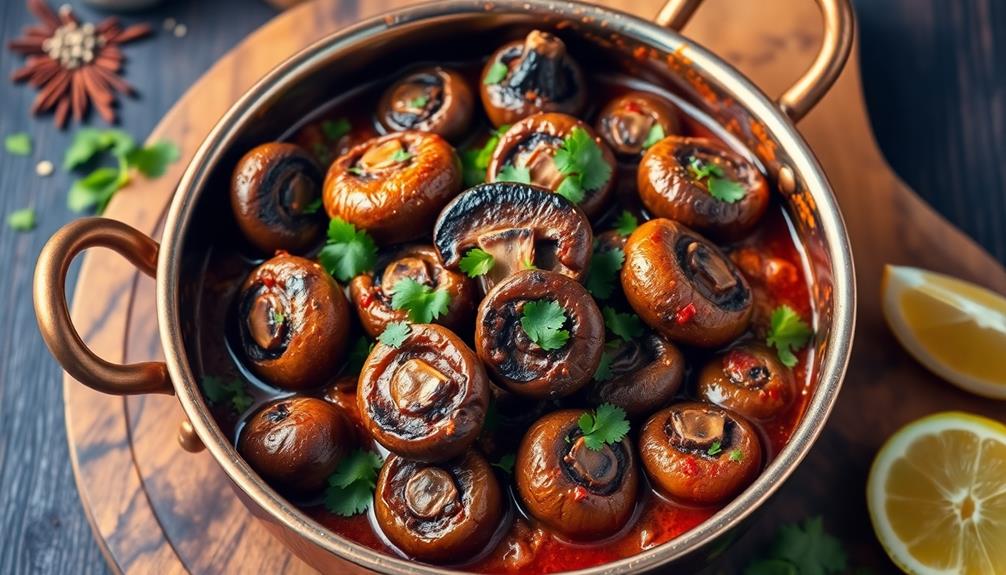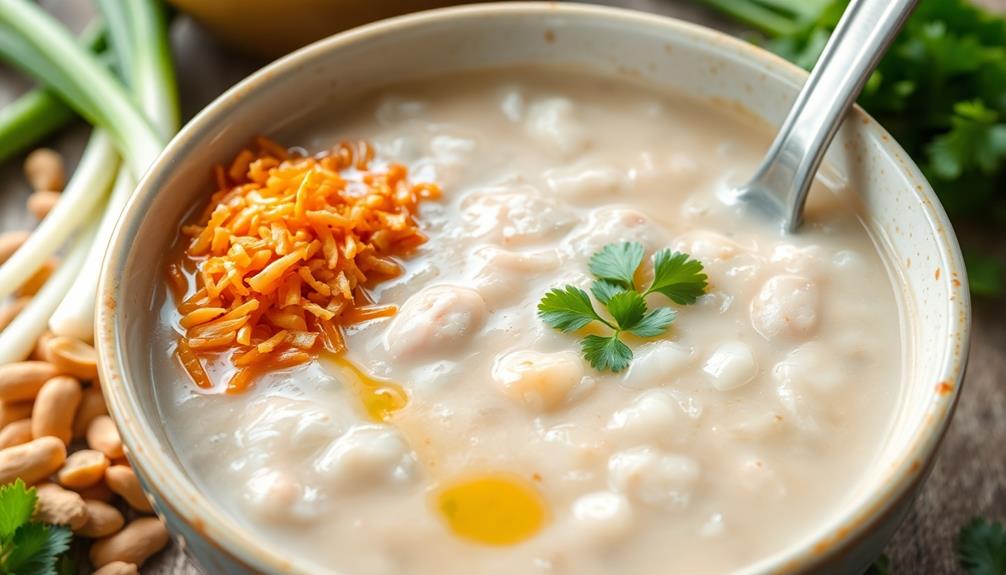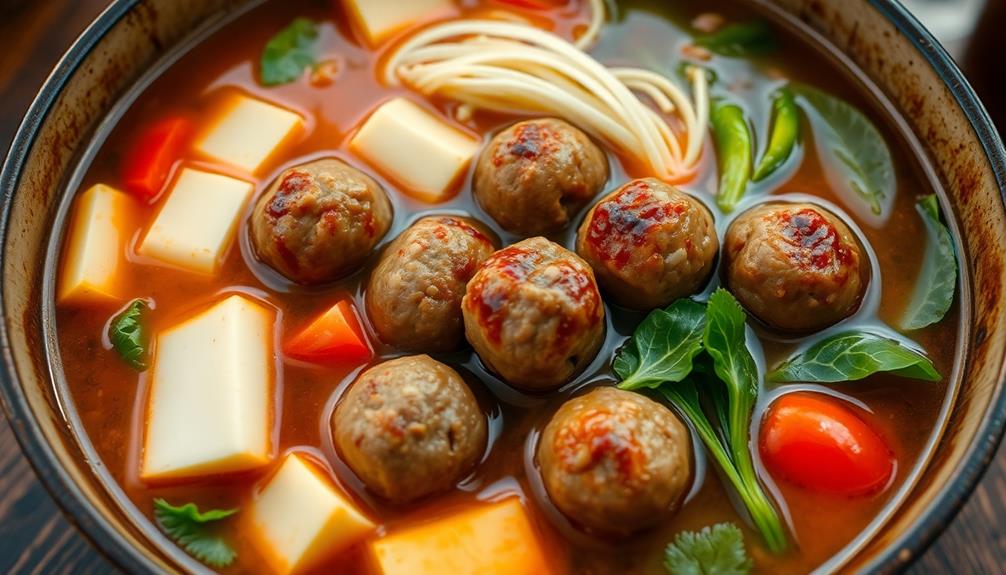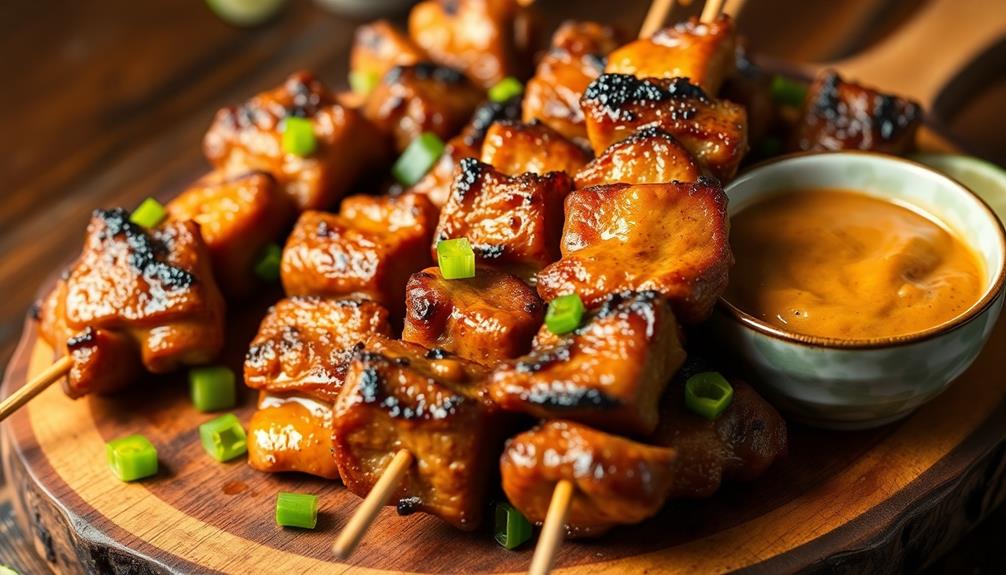Prepare to embark on a delightful culinary journey through Indonesia with lontong, the beloved rice cake! This traditional dish boasts a rich history, often featured in cultural ceremonies. Lontong's chewy texture and neutral flavor make it a versatile base, shining when paired with a variety of savory accompaniments. Whether you enjoy it as a snack or a meal component, the steaming and compression process creates an authentic taste. Discover the regional variations and local ingredients that make lontong a true representation of communal dining and sharing. Get ready to explore the depth of Indonesian cuisine beyond just lontong. If you’re eager to expand your knowledge of Indonesian delicacies, consider exploring the traditional recipe for kue putu, a classic sweet treat. With its fragrant pandan flavor and delicate texture, this steamed rice cake is a popular choice for dessert or a snack. The combination of grated coconut and palm sugar filling adds a delightful sweetness to kue putu, making it a must-try for anyone with a sweet tooth. Immerse yourself in the diverse and vibrant flavors of Indonesian cuisine, from savory lontong to sweet kue putu, and experience the rich culinary heritage of the archipelago.
Key Takeaways
- Lontong is a traditional Indonesian rice cake with a rich history, often featured in local cuisines and cultural celebrations across the archipelago.
- Lontong is known for its chewy texture and neutral flavor, making it a versatile dish that can be served with various accompaniments.
- The dish is prepared by soaking, steaming, and compressing rice into firm cakes, which are then wrapped in banana leaves and steamed further.
- Lontong is a gluten-free option that provides carbohydrates, and it can be enhanced with vegetables or proteins for a balanced meal.
- Lontong is commonly paired with curries, satay, vegetable dishes, and spicy sauces, contributing to the authentic Indonesian dining experience.
History
Lontong, a beloved rice cake delicacy, has a rich history that dates back centuries across the Indonesian archipelago. This savory and satisfying dish has been a staple in the local cuisine for generations, with variations found throughout the country.
The name "lontong" is believed to have originated from the Javanese word "lonthong," meaning "to wrap." This refers to the traditional method of cooking the rice by steaming it inside banana leaves or coconut fronds.
Over time, lontong has become a beloved part of many Indonesians' daily lives, often served as a snack or a side dish. It can be enjoyed on its own, or paired with a variety of accompaniments, such as rendang, sayur labu, or opor ayam.
The versatility of lontong has allowed it to adapt to different regional tastes and preferences, making it a unifying symbol of Indonesia's diverse culinary heritage.
Recipe
Lontong, also known as rice cake, is a popular Southeast Asian dish that's commonly served as a snack or part of a larger meal. This savory and filling dish is made by steaming pressed rice cakes, which are then typically served with a variety of toppings and accompaniments.
The process of making lontong can be a bit time-consuming, but the end result is well worth the effort. The rice cakes are made by cooking rice until it becomes soft and sticky, then pressing it into molds and steaming it until it firms up.
Ingredients:
- 2 cups of long-grain rice
- 1 teaspoon of salt
- Water
To cook the lontong:
First, rinse the rice thoroughly and then soak it in water for at least 30 minutes. Drain the rice and place it in a pot with 1 teaspoon of salt and enough water to cover the rice by 1 inch. Bring the water to a boil, then reduce the heat and simmer, stirring occasionally, until the rice is very soft and mushy, about 45 minutes to 1 hour.
Drain the rice and transfer it to a food processor or blender. Blend the rice until it's a smooth, thick paste.
Divide the rice paste into 8 equal portions and shape each portion into a compact, oval-shaped cake. Place the cakes in a steamer basket and steam for 45 minutes to 1 hour, or until they're firm and cooked through.
When serving the lontong, it can be topped with a variety of accompaniments, such as a savory vegetable stew, hard-boiled eggs, fried shallots, or a spicy sambal sauce. The lontong can also be sliced and served as a snack with a dipping sauce.
Cooking Steps
Soak the rice overnight, then drain and rinse it.
Next, steam the soaked rice for 25 minutes.
Finally, wrap the lontong in banana leaves and serve it with delicious complementary dishes.
Get ready to savor the irresistible flavors of this traditional rice cake!
Step 1. Soak Rice Overnight
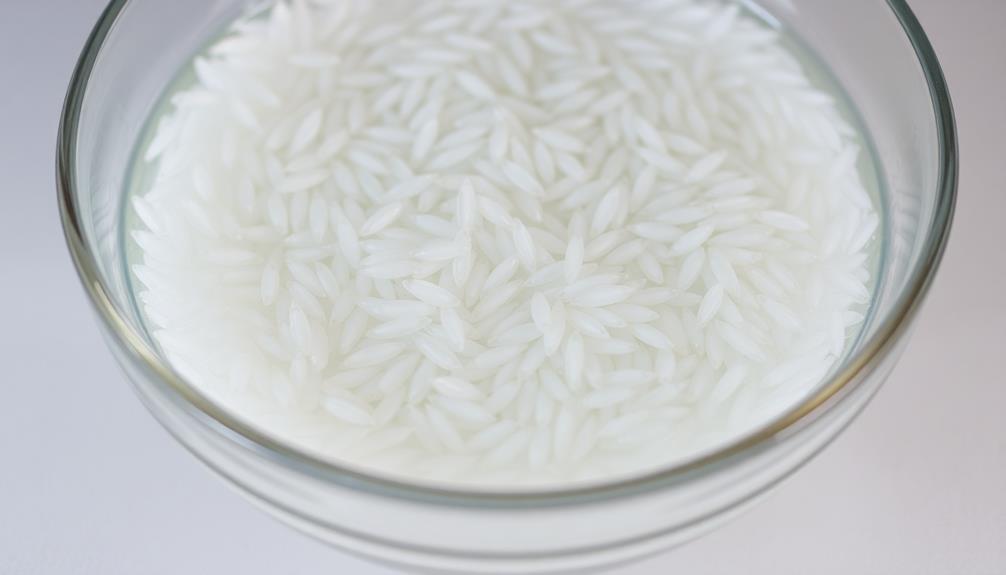
Before you begin the cooking process, it's essential to soak the rice overnight. This step is crucial for achieving the perfect texture and flavor in your lontong.
Start by rinsing the rice thoroughly under running water until the water runs clear. This helps remove any impurities or excess starch.
Next, place the rice in a large bowl and cover it with enough water to submerge the grains completely. Let the rice soak for at least 8 hours, or overnight. This extended soaking time softens the rice and allows it to absorb moisture, making it easier to cook and resulting in a smooth, creamy texture.
Once the soaking is complete, drain the rice and discard the soaking water. Your rice is now ready to be cooked into the delicious lontong you've been craving.
Get excited, because the next step is where the magic happens!
Step 2. Drain and Rinse Soaked Rice

After letting the rice soak overnight, it's time to move on to the next step. Grab a colander and carefully drain the rice, letting the water run through.
Once drained, give the rice a quick rinse under cool, running water. This helps to remove any excess starch and prepare the grains for the next stage of cooking.
Gently swish the rice around with your hands to ensure it's thoroughly rinsed. You don't want any cloudy water remaining – it should run clear.
Shake the colander a few times to help remove as much water as possible. Now the rice is ready to be steamed, which is the key to creating that perfect lontong texture.
Get ready to witness the transformation as the soaked and rinsed grains become the delightfully soft and slightly chewy lontong you've been waiting for!
Step 3. Steam Soaked Rice for 25 Minutes

To steam the soaked and rinsed rice, place it in a steamer basket or insert. Make sure the rice is in an even layer so it cooks evenly.
Pour water into the bottom of the steamer, being careful not to let the water touch the rice. Bring the water to a boil over high heat. Once the water is boiling, reduce the heat to medium-low and cover the steamer with a tight-fitting lid.
Steam the rice for 25 minutes, making sure not to open the lid during this time. The rice should be tender and cooked through when the time is up.
Carefully remove the steamer basket from the pot, being mindful of the hot steam. Transfer the cooked rice to a large bowl or plate and let it cool slightly before using it in the next step of the lontong recipe.
With the rice now steamed, you're one step closer to creating your delicious lontong!
Step 4. Wrap Lontong in Banana Leaves

With the steamed rice ready, you can now begin wrapping the lontong. Take a clean banana leaf and cut it into rectangular pieces, about the size of your hand.
Gently place a small portion of the cooked rice onto the center of the leaf. Use your hands to shape the rice into a compact, rectangular block. Be careful not to overstuff it – you want the lontong to have a nice, uniform shape.
Next, fold the sides of the banana leaf over the rice, creating a neat little package. Secure the package with a thin strip of banana leaf or a piece of string.
Repeat this process until you've used up all the rice. As you wrap each lontong, place them in a steamer basket, making sure they're not touching each other.
Steam the wrapped lontong for another 25 minutes, or until they're firm and cooked through. Unwrap and serve your delicious homemade lontong warm, with your favorite accompaniments.
Step 5. Serve Lontong With Complementary Dishes

Lontong pairs delightfully with an array of complementary dishes. One classic pairing is with sayur labu, a warm and savory vegetable stew featuring butternut squash, coconut milk, and aromatic spices. The sweet and creamy flavors of the stew perfectly balance the dense, neutral taste of the lontong.
Another popular accompaniment is opor ayam, a rich and fragrant chicken curry. The tender chicken, simmered in a coconut milk-based sauce seasoned with turmeric, lemongrass, and kaffir lime leaves, creates a harmonious flavor combination with the lontong.
For a lighter option, try serving lontong with Indonesian vegetable salad, known as gado-gado. This colorful medley of steamed vegetables, boiled potatoes, and hard-boiled eggs is tossed in a tangy peanut dressing, offering a refreshing contrast to the lontong's texture.
Whichever complementary dish you choose, lontong's versatility ensures a satisfying and authentic Indonesian dining experience.
Final Thoughts
Lontong, a beloved Indonesian rice cake, has captured the hearts and palates of many. This versatile dish can be enjoyed on its own or as part of a larger meal, complementing a variety of flavorful accompaniments.
Whether you prefer it savory or sweet, lontong's unique texture and mild flavor make it a delightful addition to any dining experience.
As you explore the world of lontong, don't be afraid to experiment with different toppings and side dishes.
Mix and match to find your perfect flavor combination. The possibilities are endless, and that's part of the joy of this beloved Indonesian staple.
Frequently Asked Questions
Where Can I Find Lontong in Different Regions of Indonesia?
You can find lontong across Indonesia, from Sumatra to Papua. It's a popular dish in many regions, with local variations in ingredients and cooking methods that reflect the diversity of Indonesian cuisine.
How Long Does Lontong Keep After It's Been Cooked?
Well, that depends on how you store it. If you keep cooked lontong refrigerated, it'll stay fresh for 3-5 days. But if you leave it at room temperature, it'll only last 1-2 days before it spoils.
Can I Substitute Any Ingredients in the Lontong Recipe?
You can substitute ingredients in the recipe, but be cautious. Some substitutions may alter the texture or flavor. Experiment with similar ingredients to achieve the desired result, but avoid making major changes to the core recipe.
Is Lontong a Gluten-Free or Vegan-Friendly Dish?
You can enjoy lontong if you're following a gluten-free or vegan diet, as it's typically made from rice flour, which is naturally gluten-free, and doesn't contain any animal products. Just be sure to check the ingredients to confirm it fits your dietary needs.
How Does the Taste of Lontong Differ From Other Rice Cakes?
The taste of lontong differs from other rice cakes as it's savory, dense, and chewy, unlike the sweet and fluffy texture of typical rice cakes. You'll find the flavors more complex, with a hint of coconut from the cooking liquid.

